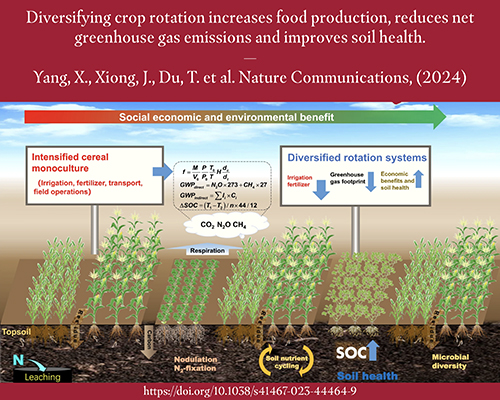Report on the City of Santa Ana’s Climate Action Plan and Alignment with Sustainable Development Goals
Historical Context and Foundational Commitments to Sustainability
In December 2011, the City of Santa Ana initiated a formal commitment to enhance urban quality of life and environmental stewardship. This commitment laid the groundwork for the development of a comprehensive Climate Action Plan (CAP), directly supporting the principles of SDG 11 (Sustainable Cities and Communities). A foundational greenhouse gas (GHG) inventory was conducted in 2012, using 2008 data to establish a baseline for future emissions reduction. The development process incorporated extensive input from community members, local stakeholders, and City committees, reflecting a commitment to SDG 17 (Partnerships for the Goals) to ensure the plan aligned with local priorities.
The 2015 Climate Action Plan: Initial Targets and SDG Alignment
The formal CAP, released in 2015, established specific, measurable targets to guide the City’s sustainability efforts. These targets represent a direct local contribution to SDG 13 (Climate Action).
- Community-wide Emissions: A target of 15% reduction by 2020 and 30% reduction by 2035.
- Municipal Operations Emissions: A target of 30% reduction by 2020 and 40% reduction by 2025.
These objectives have served as the guiding framework for Santa Ana’s growth and investment strategies, embedding sustainability into municipal planning.
The 2025 CAP Update: Advancing the 2030 Agenda for Sustainable Development
The City of Santa Ana is currently updating its CAP to incorporate new policies, technologies, and evolving climate science. This update serves as a strategic roadmap to reduce GHG emissions, improve air quality, and strengthen community resilience, thereby advancing multiple Sustainable Development Goals.
Policy Alignment
The CAP update is being developed in alignment with key statewide climate policies, ensuring a coordinated approach to climate mitigation and adaptation. These policies include:
- Assembly Bill 32 (AB 32) and Senate Bill 32 (SB 32)
- The California Air Resources Board (CARB) Scoping Plan
- Senate Bill 375 (SB 375)
- The California Environmental Quality Act (CEQA) guidelines
Direct Contributions to Sustainable Development Goals
By updating its CAP, Santa Ana is taking proactive steps to address climate change at the local level. The plan’s objectives will guide policies and programs that directly contribute to the following SDGs:
- SDG 13 (Climate Action): The core objective is to reduce GHG emissions and mitigate the local drivers of climate change.
- SDG 11 (Sustainable Cities and Communities): The plan aims to safeguard the community from climate-related impacts such as extreme heat and drought, enhancing urban resilience.
- SDG 3 (Good Health and Well-being): A primary focus is on improving air quality and protecting public health from the adverse effects of pollution and climate change.
- SDG 7 (Affordable and Clean Energy): The CAP will guide programs that promote the adoption of clean energy technologies throughout the community.
- SDG 8 (Decent Work and Economic Growth): The transition to a low-carbon economy is projected to create green jobs and foster sustainable economic development.
Stakeholder Engagement and Institutional Strengthening
The CAP update process emphasizes community participation, inviting residents, businesses, and local organizations to contribute. This inclusive approach is fundamental to achieving SDG 16 (Peace, Justice and Strong Institutions) by ensuring transparent and responsive decision-making. Opportunities for public engagement will be made available throughout the development process to foster partnerships and ensure the final plan reflects the collective vision for a sustainable Santa Ana.
Analysis of Sustainable Development Goals
1. Which SDGs are addressed or connected to the issues highlighted in the article?
-
SDG 13: Climate Action
The entire article is centered on the City of Santa Ana’s Climate Action Plan (CAP), which is a direct local-level strategy to combat climate change. The plan’s primary goals are “reducing carbon emissions,” “reducing greenhouse gas (GHG) emissions,” and strengthening “community resilience to the impacts of climate change,” which are core tenets of SDG 13.
-
SDG 11: Sustainable Cities and Communities
The article discusses a city-specific plan to enhance the quality of life for residents by creating a more sustainable urban environment. It explicitly mentions integrating “land use and transportation planning to reduce emissions and vehicle miles traveled” (SB 375) and improving “air quality,” which are key components of making cities more sustainable, safe, and resilient.
-
SDG 7: Affordable and Clean Energy
The updated CAP aims to “promote clean energy.” This commitment aligns with SDG 7, which focuses on ensuring access to affordable, reliable, sustainable, and modern energy for all. Promoting clean energy is a fundamental step in transitioning away from fossil fuels and reducing GHG emissions.
-
SDG 3: Good Health and Well-being
The article states that the updated CAP will “guide City policies and programs to protect public health” and focuses on “improving air quality.” This directly connects to SDG 3, as reducing air pollution from carbon emissions helps prevent respiratory diseases and other health issues, ensuring healthier lives for the community.
-
SDG 8: Decent Work and Economic Growth
A stated goal of the updated CAP is to “create green jobs.” This aligns with SDG 8 by promoting sustainable economic growth. Investing in clean energy, energy efficiency, and other climate-related initiatives can stimulate the local economy and create new employment opportunities in the green sector.
2. What specific targets under those SDGs can be identified based on the article’s content?
-
Target 13.2: Integrate climate change measures into national policies, strategies and planning.
The article demonstrates this at a sub-national level. The City of Santa Ana is developing and updating its Climate Action Plan, a formal strategy to reduce emissions. The article notes this update is being developed “in alignment with statewide climate policies and goals including Assembly Bill 32 (AB 32) and Senate Bill 32 (SB 32).”
-
Target 11.6: By 2030, reduce the adverse per capita environmental impact of cities, including by paying special attention to air quality.
The CAP’s core objective is to reduce the city’s environmental footprint. It sets specific targets for reducing “Community-wide emissions” and “Municipal operations emissions” and explicitly mentions “improving air quality” as a key goal.
-
Target 11.3: By 2030, enhance inclusive and sustainable urbanization and capacity for participatory, integrated and sustainable human settlement planning and management in all countries.
The article highlights the integration of “land use and transportation planning” (SB 375) to reduce emissions. Furthermore, it emphasizes a participatory approach, stating that “Community input is essential” and inviting “residents, businesses and local organizations to participate in shaping the future of Santa Ana.”
-
Target 7.2: By 2030, increase substantially the share of renewable energy in the global energy mix.
The city’s goal to “promote clean energy” directly supports this target. While the article doesn’t give a specific percentage, the promotion of clean energy is a necessary step to increase the share of renewables in the local energy mix.
-
Target 3.9: By 2030, substantially reduce the number of deaths and illnesses from hazardous chemicals and air, water and soil pollution and contamination.
The plan’s focus on “improving air quality” and “protecting public health” is a direct action towards achieving this target by reducing illnesses caused by air pollution from GHG emissions.
3. Are there any indicators mentioned or implied in the article that can be used to measure progress towards the identified targets?
-
Percentage reduction in greenhouse gas emissions.
The article provides explicit, quantifiable indicators from the 2015 CAP. These are: “Community-wide emissions: 15% reduction by 2020, 30% reduction by 2035” and “Municipal operations emissions: 30% reductions by 2020, 40% reduction by 2025.” These directly measure progress towards reducing the city’s environmental impact (Target 11.6) and integrating climate action (Target 13.2).
-
Development and implementation of a local climate adaptation strategy.
The article implies this indicator by stating the CAP aims to strengthen “community resilience to the impacts of climate change” and safeguard the community from “climate-related impacts such as extreme heat and prolonged drought.” The updated CAP itself serves as the indicator of this strategic planning.
-
Measures of air quality.
The goal of “improving air quality” implies that progress will be measured using air quality metrics (e.g., levels of particulate matter, ozone), which would serve as an indicator for Target 3.9 and Target 11.6.
-
Number of green jobs created.
The stated goal to “create green jobs” implies that the number of new jobs in sustainability-focused sectors will be a key performance indicator for the economic benefits of the CAP, relevant to SDG 8.
SDG Analysis Summary Table
| SDGs | Targets | Indicators |
|---|---|---|
| SDG 13: Climate Action | 13.2: Integrate climate change measures into policies, strategies and planning. | Development and implementation of the Climate Action Plan (CAP) in alignment with state policies (AB 32, SB 32). |
| SDG 11: Sustainable Cities and Communities | 11.6: Reduce the adverse per capita environmental impact of cities, including by paying special attention to air quality. | Percentage reduction in community-wide emissions (15% by 2020, 30% by 2035) and municipal emissions (30% by 2020, 40% by 2025). |
| 11.3: Enhance inclusive and sustainable urbanization and capacity for participatory planning. | Integration of land use and transportation planning (SB 375); Provision of community engagement opportunities for residents and businesses. | |
| SDG 7: Affordable and Clean Energy | 7.2: Increase substantially the share of renewable energy. | Implementation of policies and programs that “promote clean energy” (implied). |
| SDG 3: Good Health and Well-being | 3.9: Substantially reduce deaths and illnesses from air pollution. | Improvement in local air quality metrics as a result of emission reduction efforts (implied). |
| SDG 8: Decent Work and Economic Growth | 8.2: Achieve higher levels of economic productivity through diversification and innovation. | Number of “green jobs” created through CAP initiatives (implied). |
Source: santa-ana.org







